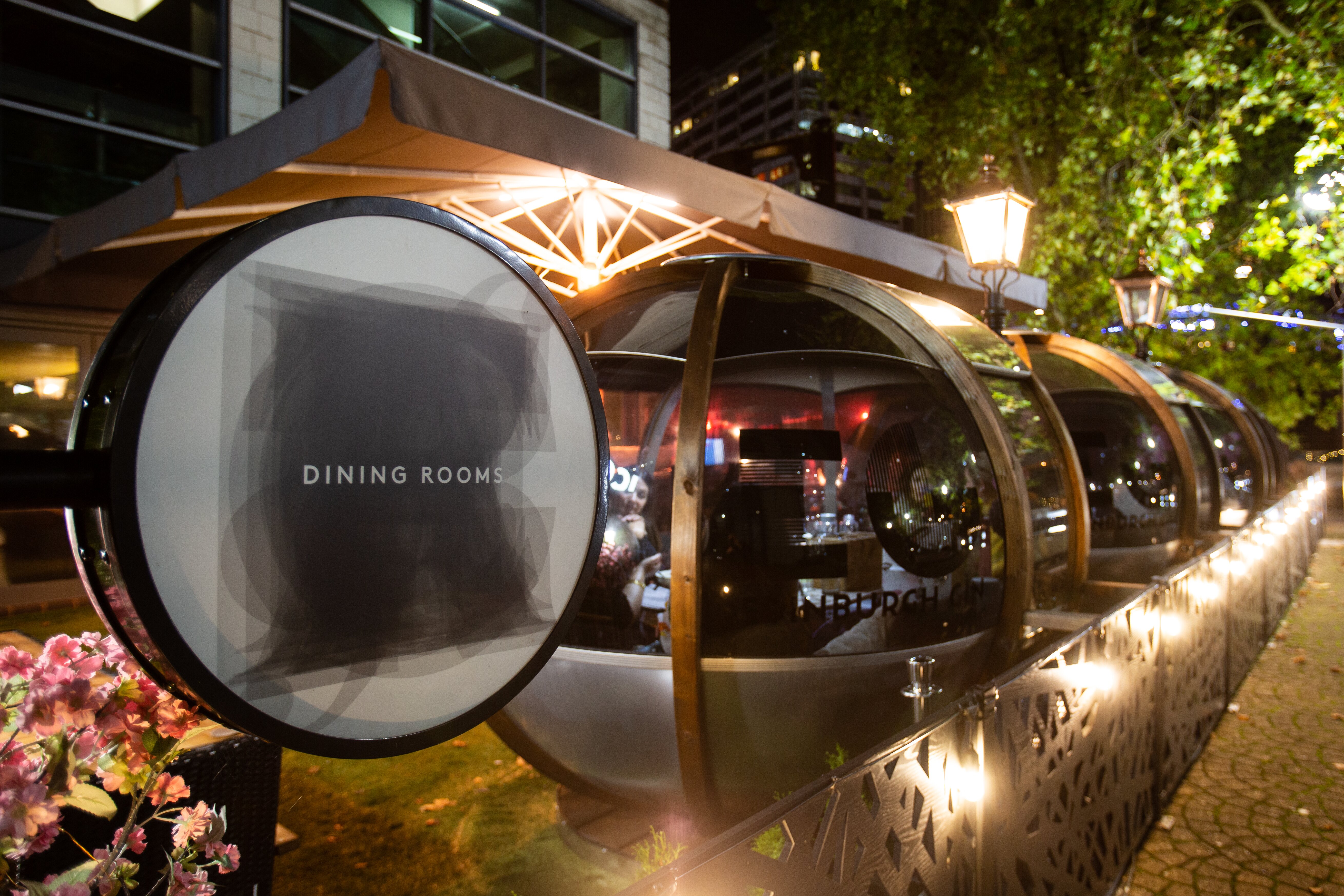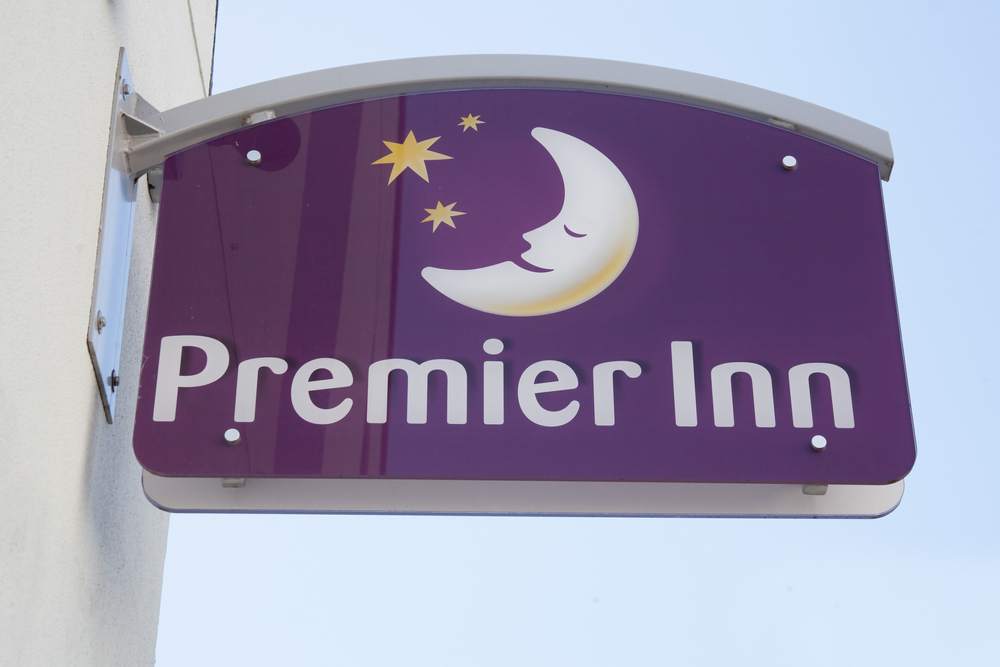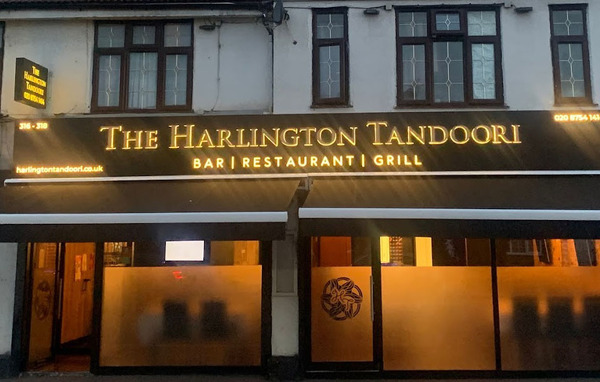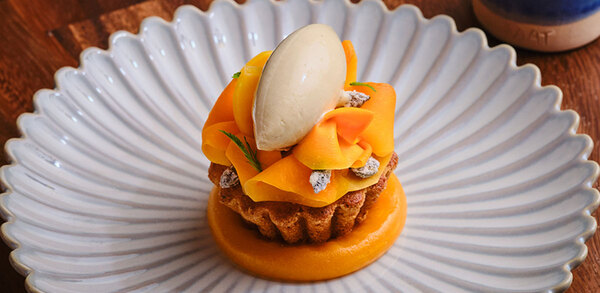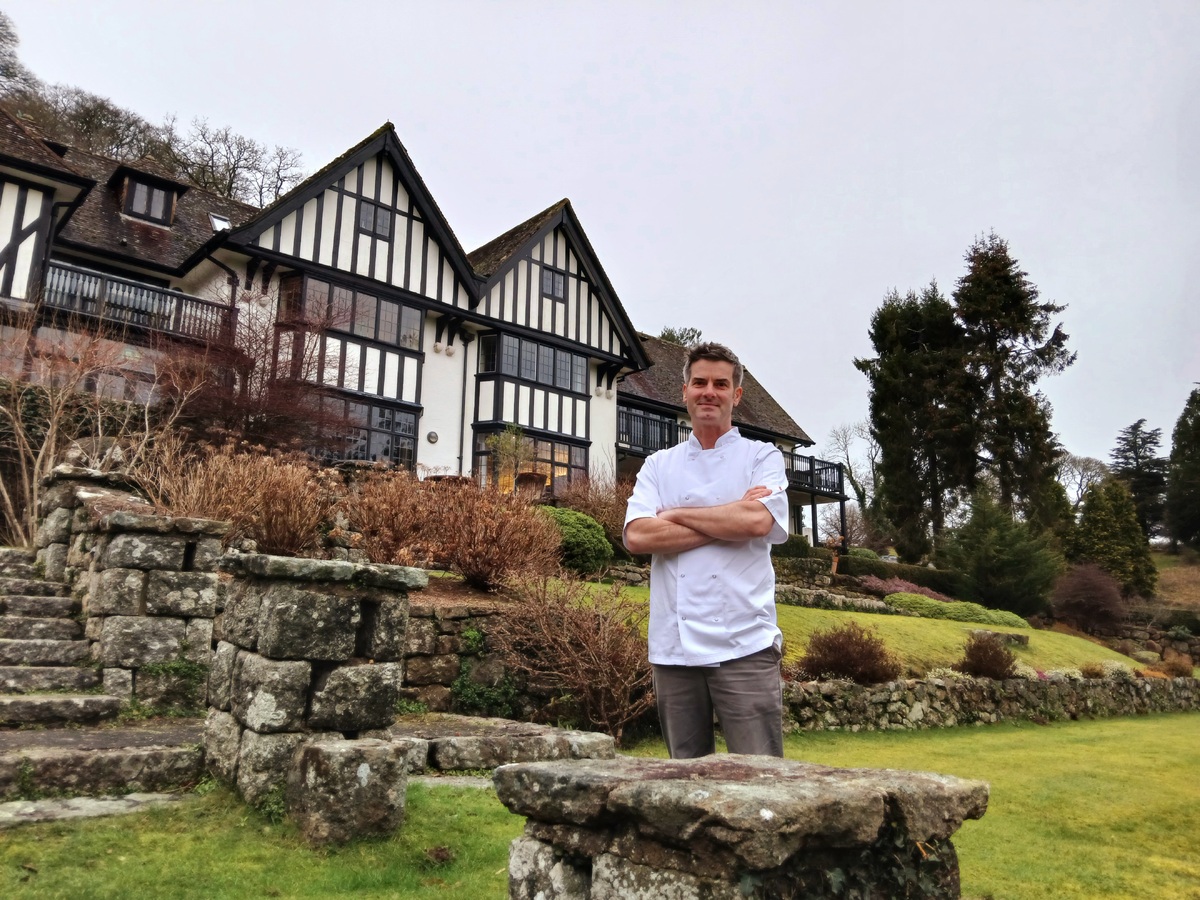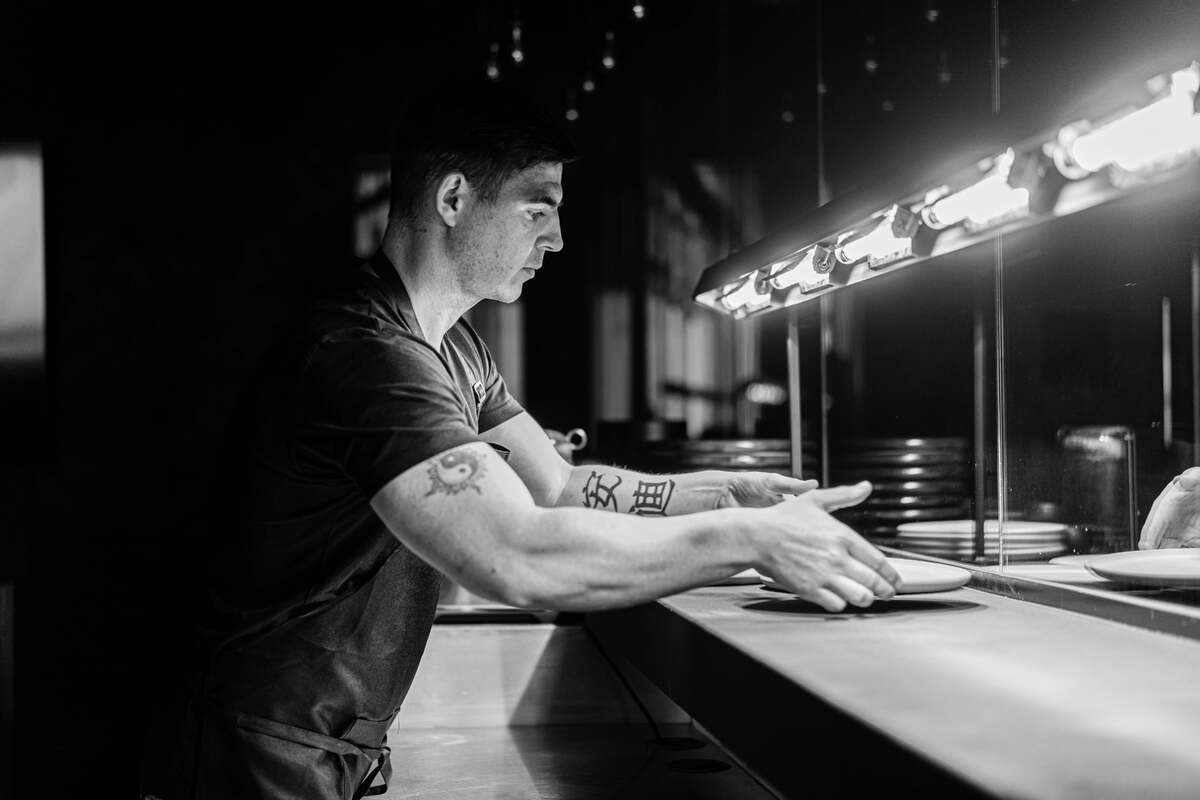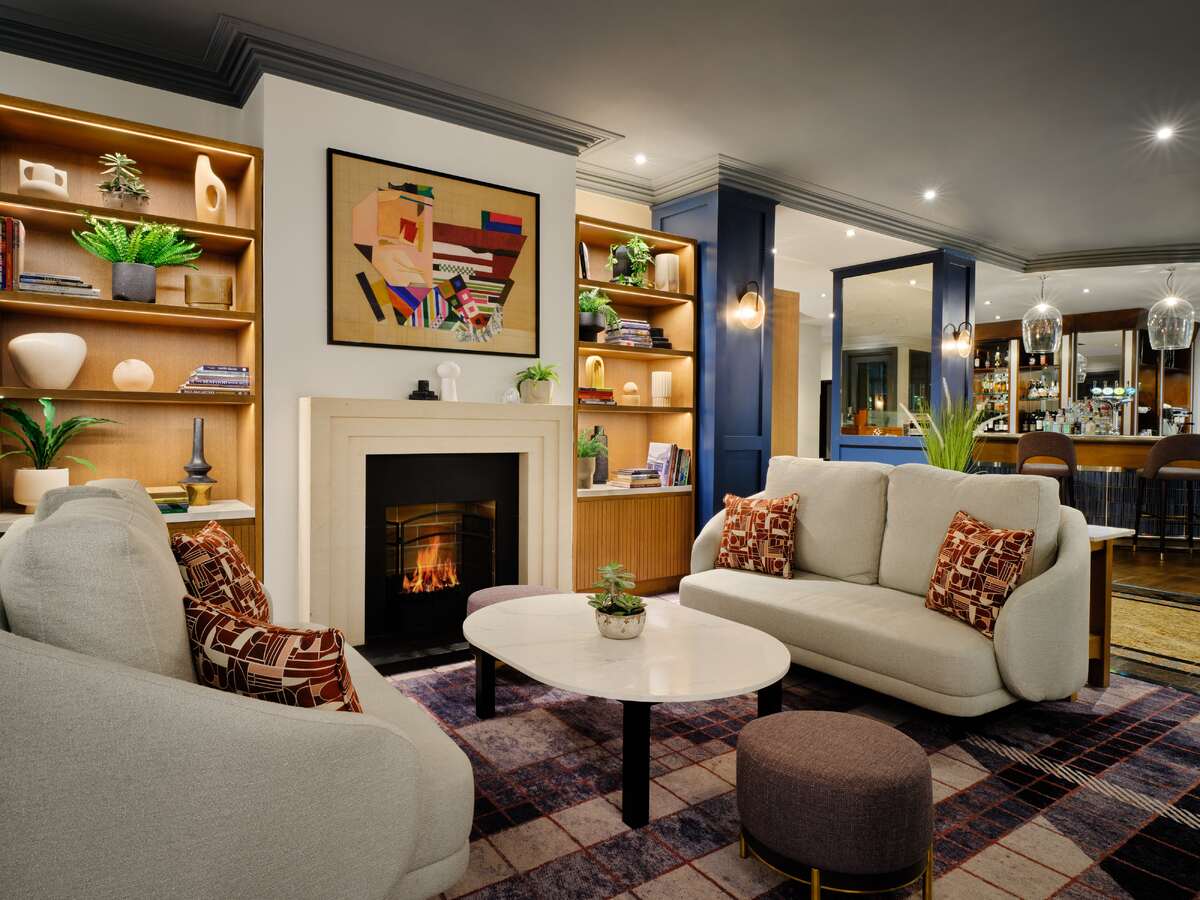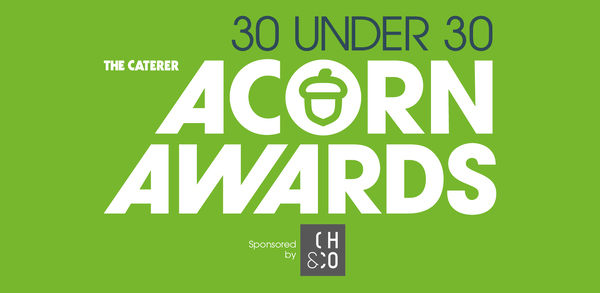Think outside the box: keeping guests warm with outdoor service this Christmas
Tier 2 restrictions are prompting operators to consider an alfresco offering this winter – but customers will be hoping for more than a scotch egg next to a gas heater. Caroline Baldwin discovers the best ways to keep your guests safe, warm and comfortable.
In the latter half of the 2010s a new phrase cropped up in the British vocabulary: the Danish concept of hygge. It is used to describe an attitude of self-care and slowing down – think time away from your smartphone and indulging in a hot bath or curling up with your favourite book.
But this year, the nation has already done its fair share of hibernating – 2020 will be the year everyone remembers for staying at home and the devastating effect it has had on the hospitality industry.
Navigating Covid-19 social distancing restrictions has been a confusing time for customers and businesses alike, but while winter Covid plans differ wildly across the UK, one thing is certain – making your outside space as cosy and inviting as possible can only increase spend.
That was simple over the summer, when people met in beer gardens to toast each other with glasses of rosé under the sun. But now it’s dark and cold the idea of sitting outside isn’t so appealing. Instead of waiting for these rules to pass, the industry is crying out for guests to don hats, gloves and scarves to revisit their favourite establishments before it is too late.
Pods and domes
Taking inspiration from themed outdoor experiences that pop up over winter, restaurants up and down the UK are looking at introducing outdoor service on a smaller scale. Somewhat presciently, Sam Morgan and Andrew Sheridan’s Craft restaurant in Birmingham invested in four pods before Covid-19 struck. With built-in heating and an Alexa music system they proved popular as the first venue in the city with this type of private dining offering. In recent months demand has gone through the roof and the restaurant added five more to its fleet.
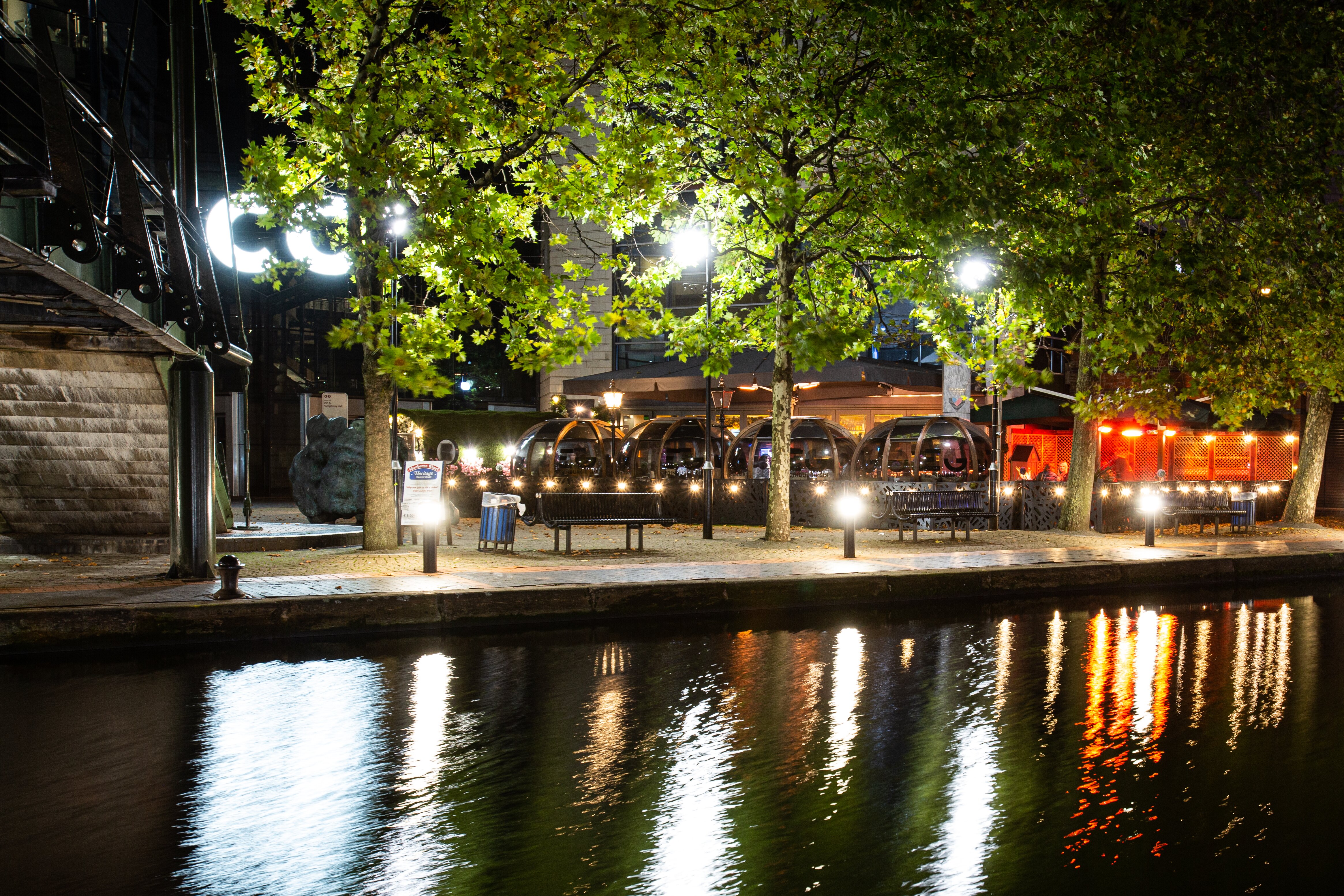
Morgan, group chief executive of We Are Craft – which operates Craft and restaurant 8 – says the restaurant redeveloped the site last Christmas to include the pods “just because we thought it was cool and unique”.
“There was a big demand when we reopened. Then the pandemic hit and they became a bigger focus as a great solution to dining outside,” he adds.
The pods have retractable sides, which Morgan was insistent on including in the initial design to ensure they were well-ventilated during the summer months. Little did he know that restrictions would enforce mixed households to dine outside. Now if a mixed house is present, the front of house marks the pod with a coloured disc and ensures the rear and side panels remain open.
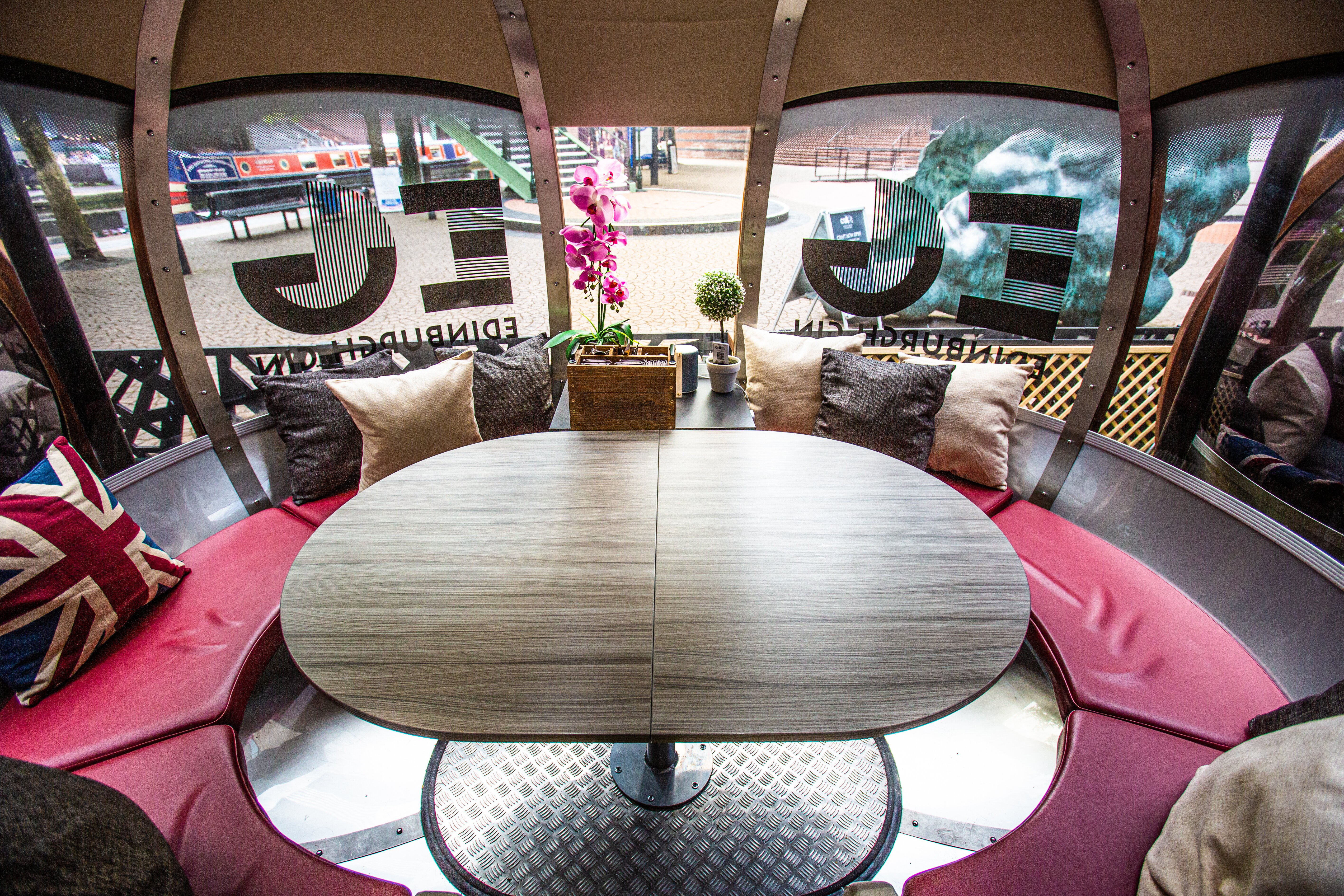
Morgan says: “During lockdown everyone realised we existed and saw what we had a compelling offer – we became one of the busiest venues in Birmingham with a six- to seven-week lead time to get a chair, and four or five months to get a pod. It was worthwhile for us.”
Craft now has nine pods and two smaller capsules, and Morgan says each one paid for itself within six weeks – some customers are even booking pods for December 2021.
“A lot of people walk through our door now and realise our food is bloody brilliant, but they had just seen the pod and thought it was cool,” he adds. “It’s the Instagram moment: it needs to look good, but you need to back it up when you get there. If your food is awful they’ll never come back. I’m delighted we’ve done it – I’m not convinced we’d be here now if we hadn’t.”
It’s the Instagram moment: it needs to look good, but you need to back it up when you get there
The Meldrum House hotel in Aberdeenshire has installed similar luxury dining domes in the 240-acre grounds of the 800-year-old manor. The four heated domes – the first of which were introduced over the summer – are named after constellations, as they each have a 360-degree view of the sky. These clever spaces have automatic ventilation, while the six-foot glass doors have a self-locking system, which allows them to stay open and ensures consistent airflow throughout.
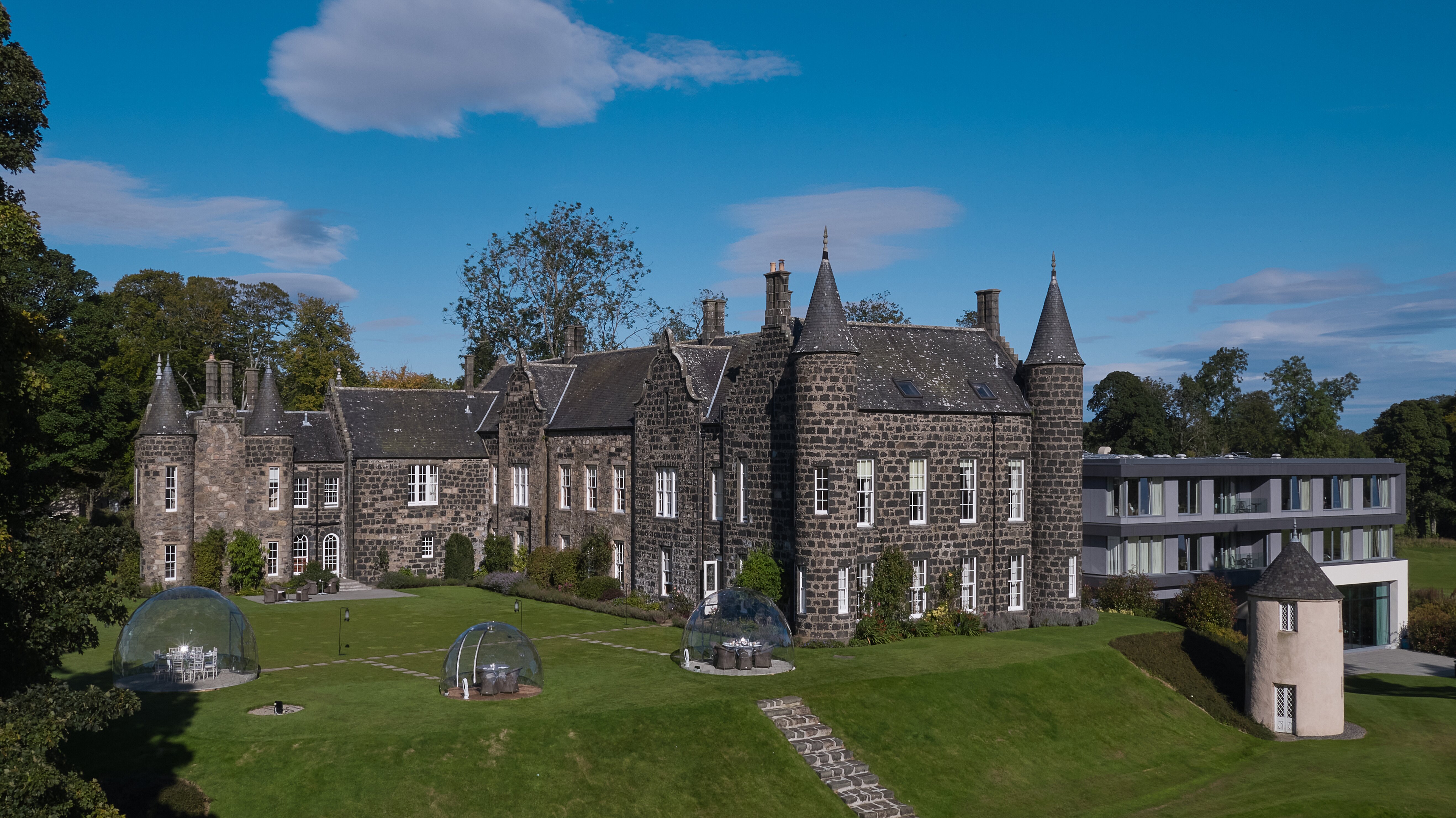
Rental of the luxury domes ranges from £70 at peak Saturday night to £20 for breakfast, and they have been consistently fully booked, providing the hotel an additional £65,000 of room hire revenue in less than five months.
“The ROI has been fantastic,” says general manager Jordan Charles. “It’s one of the most successful projects we’ve put into Meldrum House because they’ve paid for themselves from the room hire revenue alone – and that’s before you buy a fillet steak, a bottle of wine or a cup of coffee.”
Tents and tipis
If your business is blessed with space, installing a tipi or marquee is another way to create more outdoor covers while protecting guests from the elements. Tents have been erected in beer gardens and hotel grounds up and down the country, including at the Vineyard hotel in Berkshire, which hired a marquee to replace its closed restaurant during lockdown (see below).
Even if you don’t have the space, sometimes it takes a little ingenuity and support from your neighbours, like in the case of the Regent in Balham, London. Over the summer, the pub was able to expand its beer garden into the grounds of the school next door.

The pub knocked through the wall from its beer garden into the extended space, with customers stepping through a wardrobe to get into what it has dubbed the Secret Garden.
During the summer months, the space had a festival vibe, with tables, chairs and brightly coloured umbrellas, but the Regent has since hired two interconnected tipis to create its Enchanted Alpine Wonderland over the winter months. The heated tipis each measure 13 metres in diameter and combined provide 100 socially distanced covers. Each has a firepit and is decorated with ivy, red berries, twinkling lights and faux furs thrown over chairs.
Speaking before London entered Tier 3, Jess Dahlin, marketing director at Livelyhood Pubs, which operates the Regent, said that opening night was “absolutely packed” and the space is almost at capacity up until Christmas, with a partnership with Le Rac Shack offering customers an alpine feast of melted cheese over meats, vegetables and seasoned potatoes.
“You need to let people know that they’re not going to be cold and reassure guests that it’s actually OK to sit outside,” she advises.
You need to let people know that they’re not going to be cold and reassure guests that it’s actually OK to sit outside
To help with that reassurance, the Regent offers customers a chance to purchase blankets. “Because we can’t wash them in between use, we bought a load of blankets cheaply and we’re selling them for £4. We’re hoping to sell 600 in December – all the profit will go to Only A Payment Away.”
###Luxurious seasonal menus
Elsewhere extravagantly trimmed trees, furs draped over seating areas and opulent outdoor menus are helping create a sense of luxury. Chelsea florist Blooming Haus has been called upon by Bluebird in London’s Chelsea to deck its outdoor terrace with white branches, fairy lights and beautifully decorated Christmas trees. Three chalets are available to rent, and giant heated umbrellas keep the rest of the terrace warm and set the scene for its exclusive Taittinger cocktail menu.
The Four Seasons Hotel London at Park Lane has partnered with Champagne Dom Pérignon for its outdoor dining concept, On The Terrace. Executive chef Henry Brosi says he wanted to create a different culinary experience from its existing offerings to better reflect the outdoor dining experience.
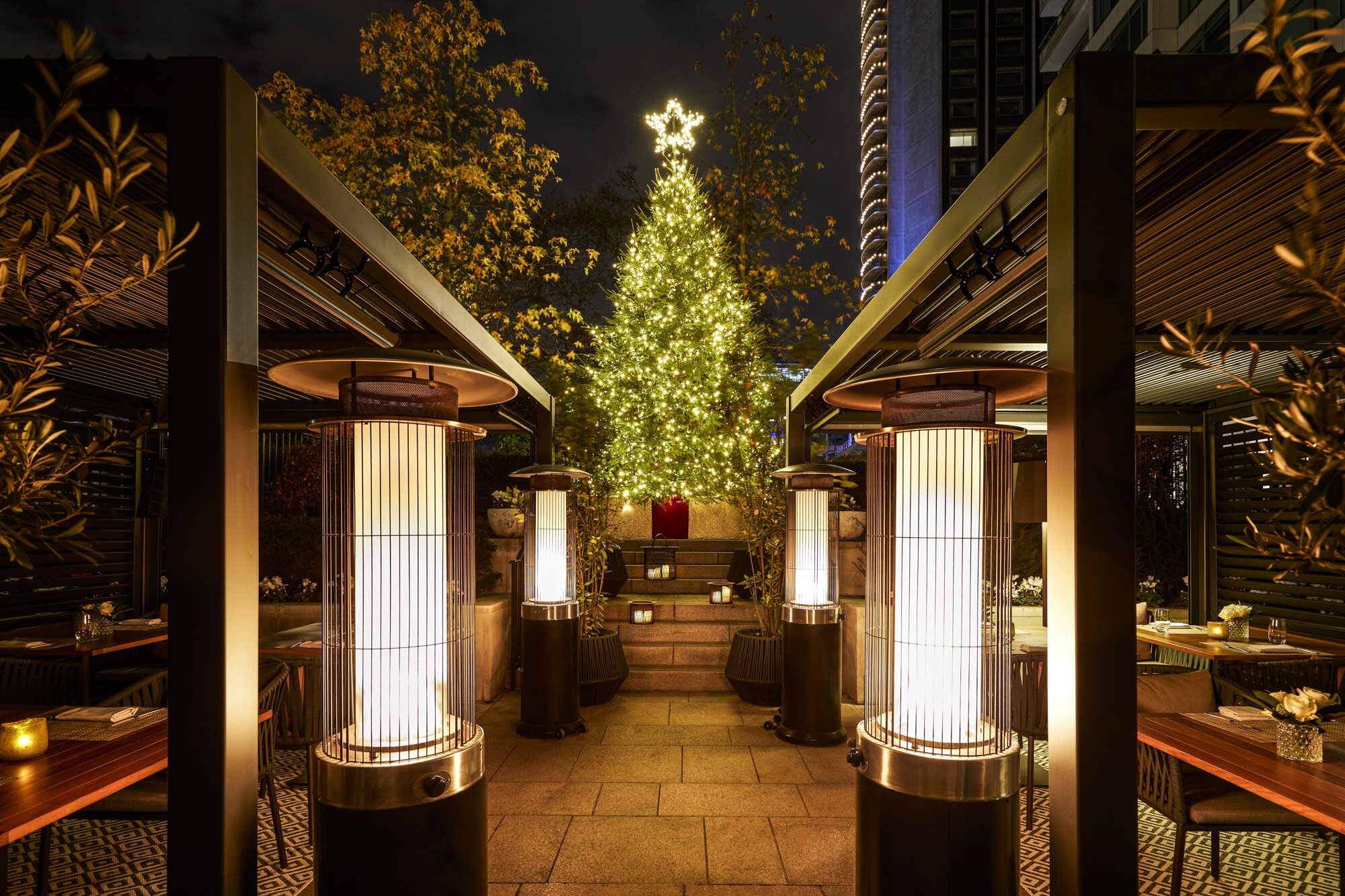
“In my opinion this meant a grilling experience, so we have selected various cuts of meat and fish – both UK and internationally sourced – including wagyu and fish like wild-caught sea bass and Scottish lobster,” Brosi says. “Starters include a selection of oysters from around the British Isles, as well as Scottish langoustines, which we will do as a tempura. Our outdoor winter warmer onion velouté will be available as well. I was looking to focus on British sourced comfort food.”
Brosi says that the menu was designed to withstand the plunging temperatures. “We feature predominantly cold starters, which will not be affected by the elements, as well as some hot ones, such as our tempura, white truffle risotto or our Taleggio cheese croquettes, which are all able to hold the heat quite adequately. Then, of course, our different cuts of meat hot off the grill.”
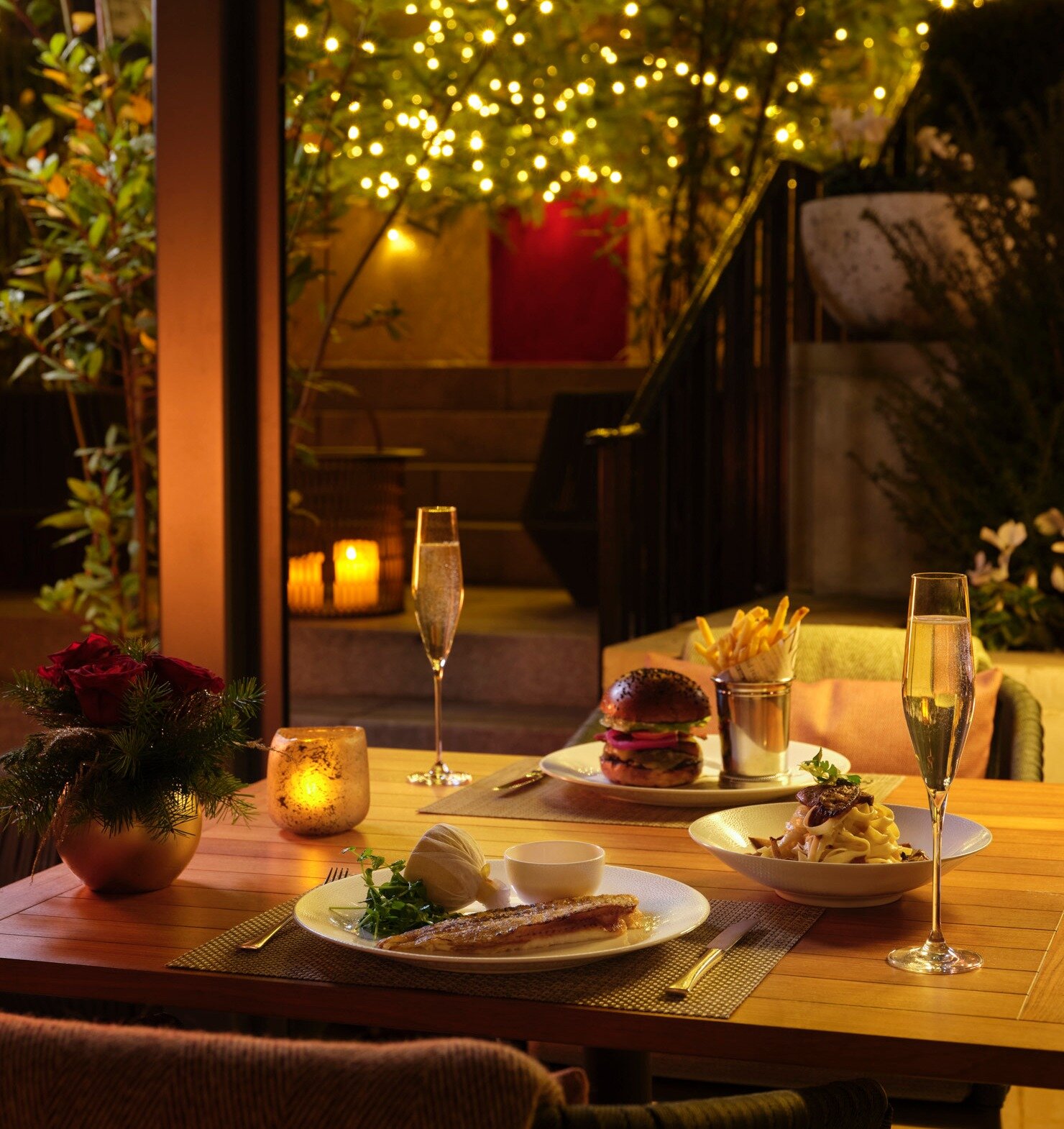
Melted cheese and alpine influences are a popular choice, with the Berkeley in London Belgravia also choosing the cuisine for its Winter at the Garden outdoor dining experience. Raclette grills, imported from France, take centre stage in each of its five outdoor cabins. The Berkeley is also betting on decadent desserts to encourage guests to spend an evening outside, with a flambéed baked Alaska set to be a standout dish, featuring different flavours of ice-cream – chocolate, orange and macadamia – while the venue will also offer tableside hot chocolates with Valrhona chocolate mixed with a glug of rum or whisky to keep out the chill.
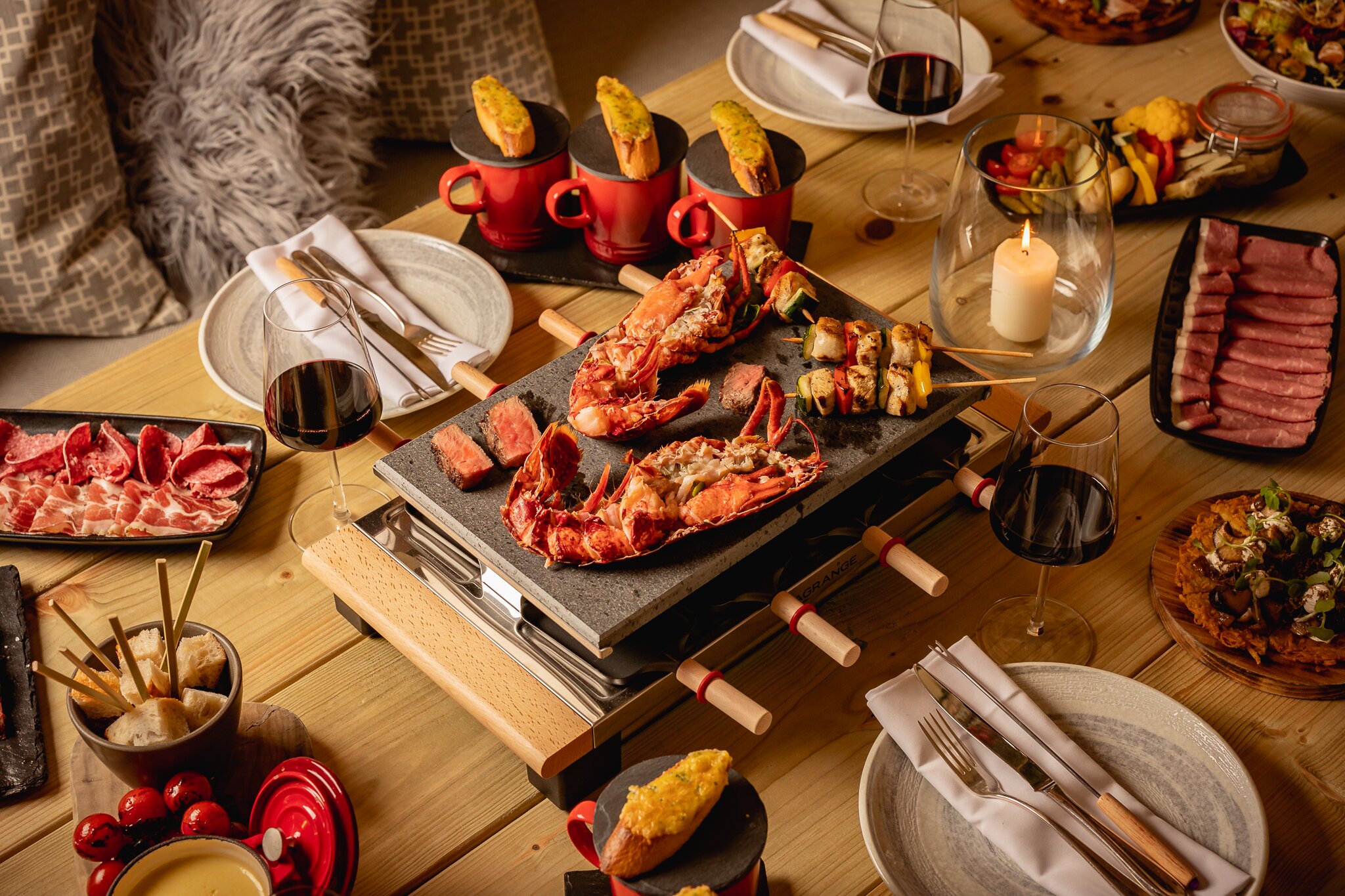
This year winter dining is clearly going to be very different from usual, but one thing the industry can take away from this experience is a new level of resilience, as well as some creative business development ideas. Livelyhood Pubs' Dahlin says the industry has an amazing way of adapting. “It’s about thinking creatively and adopting things fast and being nimble,” she says. “These are skills we’re definitely taking into next year.”
Top tips for hosting guests outside in the winter months
- Be inventive and create a theme that encourages customers to leave the warmth of their homes to experience something special.
- Ensure your messaging is clear and tell customers how you plan to keep them warm.
- Plan a menu around your theme and consider small tapas plates that can arrive staggered to ensure food stays warm.
- Take inspiration from Dishoom’s hot chai and offer customers queuing for tables a hot drink as they wait.
- Consider offering guests blankets to help them stay warm – but if laundry costs are a concern, make them available on request (or at a cost) rather than offering to every cover.
- Invest in portable gas heaters that can be moved around your outdoor space to accommodate socially distanced tables.
- If you can’t install an open fire, decorate your outdoor space with warm hues from candles and fairy lights.
- If erecting a tipi or marquee, remember the flooring – make sure it is non-slip and invest in weatherproof outdoor rugs to help warm up the space.
- Carefully plan electrical power sources – do you need a generator? Do you need specialist catering equipment if you are cooking away from your traditional kitchen space?
Case study: the Vineyard’s summer success story gets a winter makeover
When Covid-19 locked down the hotel back in March, the Vineyard closed its restaurant and invested in an outdoor food offering, which opened over the summer under the name InsideOut.
The hotel initially hired the 18 metre-diameter marquee – seating 60 socially distanced guests – for July to September, and it was a big hit with the local community. Despite the original restaurant remaining closed, general manager Paul Shanahan says revenues from the marquee over the summer months helped to combat the loss of weddings and events the venue would have normally been hosting, so it was obvious that it needed to update the marquee for winter.
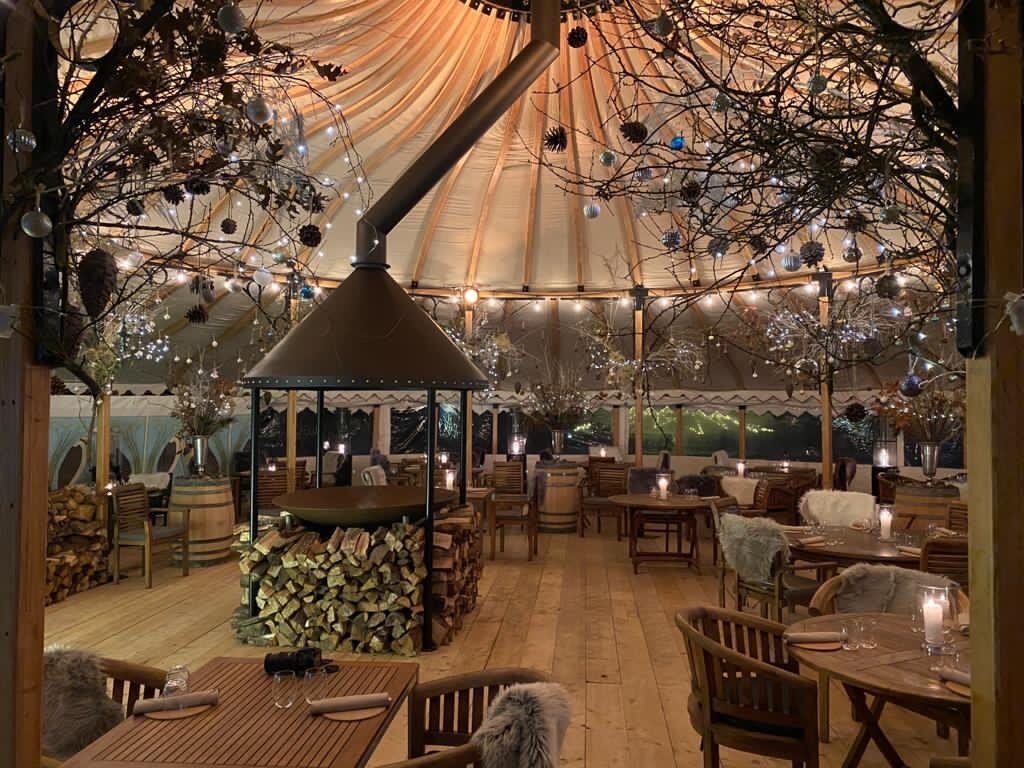
The marquee cost around £50,000, including assembly and disassembly, and the Vineyard has budgeted for an additional £10,000 a month, which will include the continued rental of the marquee and winter-themed decor to convert InsideOut to OutSide. This cost also includes the all-important heating, consisting of a central firepit with a chimney and gas heaters for each table.
“The response has been phenomenal,” Shanahan says. “We’ve had triple the covers this year compared to last year in the [indoor] restaurant space. It’s a lot cheaper, and while spend per head is a lot less, the volume is greater, and we’ve never engaged locally as much.”
It’s a lot cheaper, and while spend per head is a lot less, the volume is greater, and we’ve never engaged locally as much
The success of the summer marquee has encouraged the Vineyard to think about building its own permanent structure. But for the time being it was important to capitalise on the season by updating it with a winter barbecue concept, while adhering to marquee legislation that states 50% of the side walls must be removed to count as an outdoor space.
“The whole design is winter nights, warming hearty food and being able to sit outside and relax and be comfortable,” he explains. “Think après-ski and mulled wine. We’re advising everyone to wrap up warm and bring the ski jackets that they’ve not had chance to wear this year.”
A tapas-style menu offering items like pork goulash and raclette creates a relaxed and informal vibe, which is exactly what the hotel had been trying to achieve before Covid struck.
Shanahan says one of his goals for 2020 was to show off the property in a different light. “The Vineyard has been here for 20 years, it’s had Michelin stars and has always had a very formal dining offer. We want to look at how we can be more approachable and casual, while still offering great food and great service.”
He adds: “The challenge with hotel dining rooms is trying to get guests through the front door that aren’t staying there. We try to do something new and remind everyone we’re still here, showing them a different side of what we’re capable of doing.”



